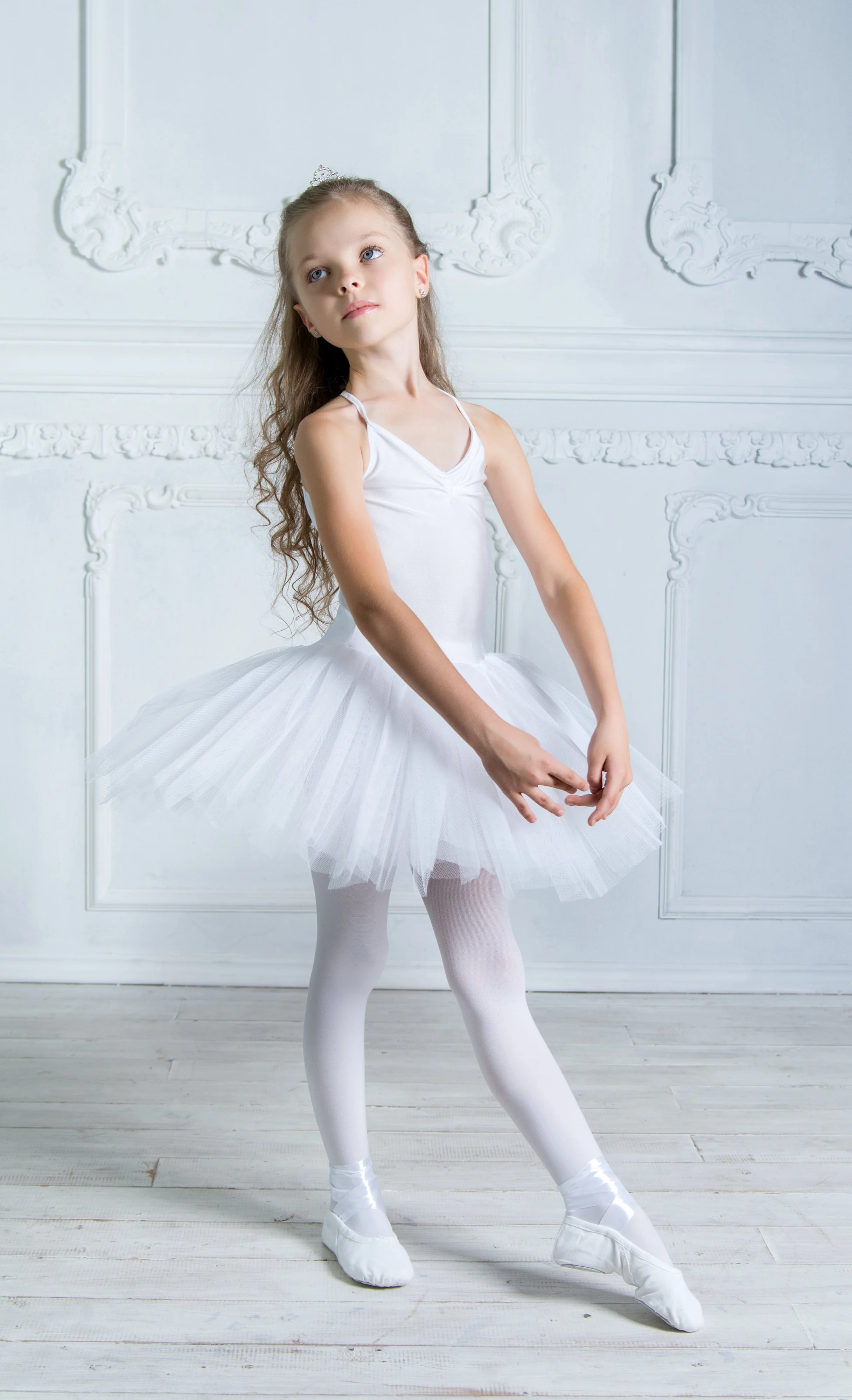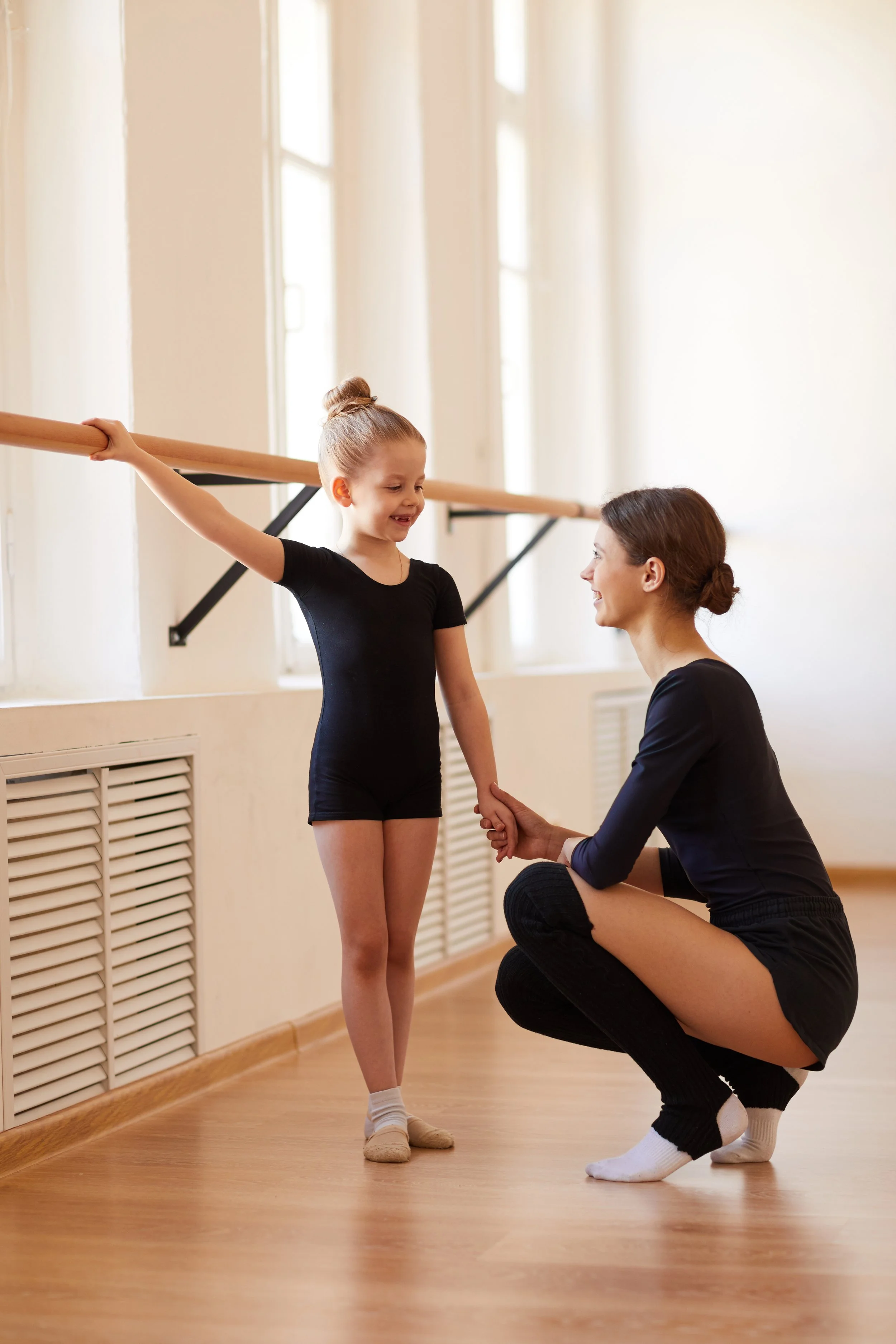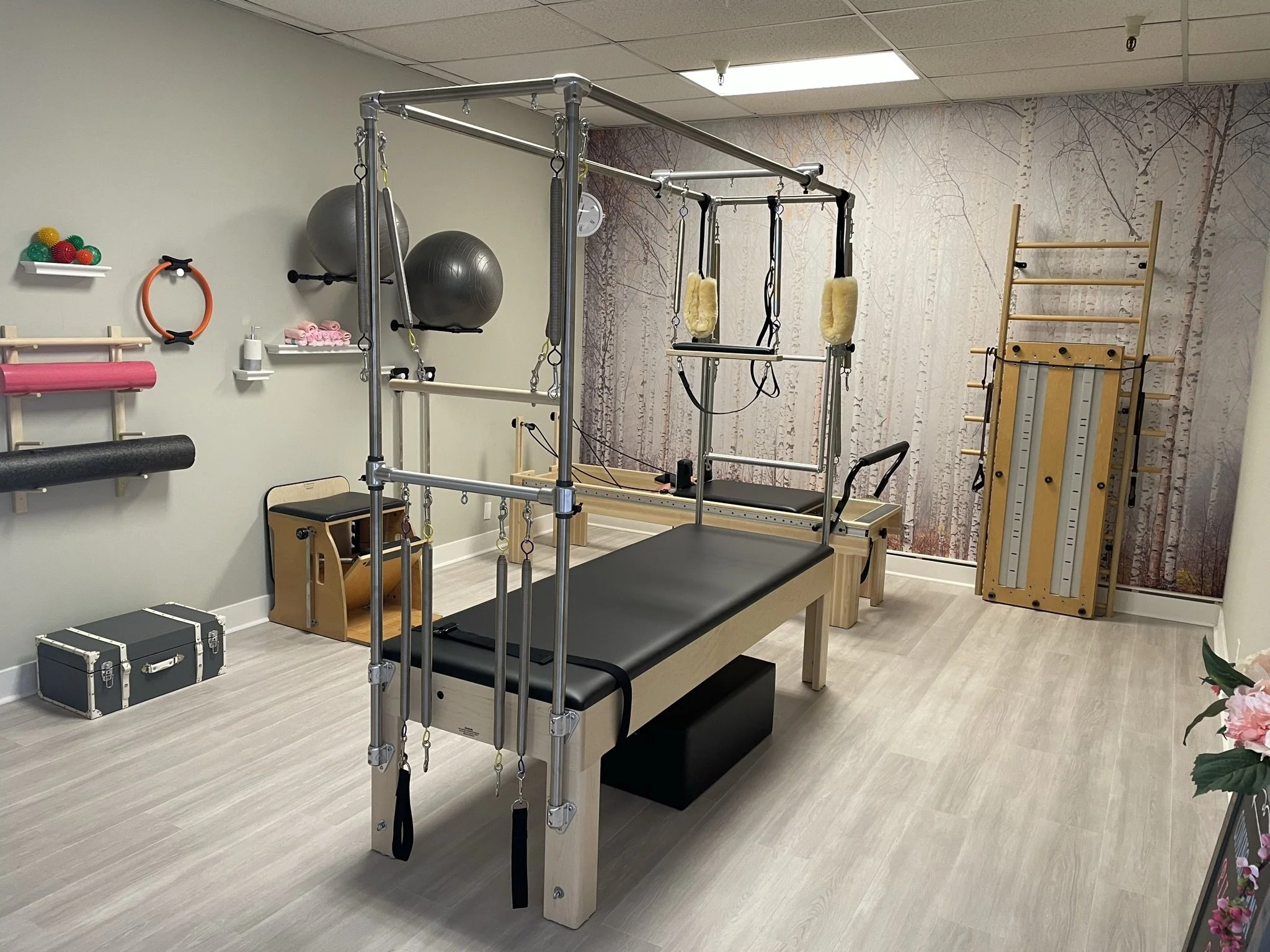About Pilates
Pilates is for Dancers
Learn your true turnout and the stretches and strengthening methods to improve it. Get more out of your extensions, arabesque and a la seconde. Build your jumps, port de bras and balance. Learn how to maintain healthy feet and ankles for being en Pointe. Design an efficient warm up and cool down. Become an injury free dancer, with proper alignment. Learn to work smarter, not harder.
Pilates is for Parents
It’s all about you. Is your child taking class? How about taking a session at the same time? Find better posture, get more flexibility and build a strong core. Pilates supports your body through a balance of strength, mobility and flexibility, with every exercise engaging your core. A strong core relieves lower back pain, improves balance and promotes better posture. You’ll feel better, too!
Pilates is for Healing
Pilates is a great tool for injury rehab and prevention. By strengthening core muscles, optimizing alignment and creating correct movement patterns we can prevent reaggravating old injuries and developing new ones. PTs are always searching for a system to take patients from the early stages of rehab to the long-term goal of a conditioned, efficiently functioning body. Pilates is that system!
Pilates: A Brief History
Pilates was invented over 100 years ago by fitness pioneer Joseph Pilates.
Born in Germany in 1883, “Joe” Pilates was sickly and asthmatic as a child. To overcome his ailments, he turned to athletics and soon found himself immersed in the study of physical exercise. He was especially intrigued by the Greek ideal of balance between body, mind and spirit, and began to develop his own exercises based on this notion.
In 1912, Joe traveled to England, where he worked as a self-defense instructor for Scotland Yard. When the First World War erupted, the British sent Joe to an internment camp along with other “enemy aliens.” He used the time in confinement to refine his regimen and to teach the exercises to his fellow detainees. He also began attaching springs to hospital beds to allow bedridden patients to do resistance training. These experiments would ultimately lead Joe to design his own eponymous apparatus.
In 1926, Joe moved to the United States and opened a fitness studio in New York City. As luck would have it, the New York City Ballet rehearsed in the same building, and soon Joe had a thriving business teaching his method to ballet dancers, including George Balanchine.
From there, the Pilates Method spread rapidly across the dance world. Joe trained a generation of teachers, including Carola Trier and Romana Kryzanowska, who in turn trained others. The Gospel According to Joe Pilates was well on its way.
Benefits of Pilates
What is Pilates?
A mind-body workout. Pilates emphasizes quality of movement over quantity of repetitions. With proper breathing, concentration and body alignment. your movements will become more flowing and graceful.
A strong core. Pilates strengthens your "core" — your deep abdominal muscles and the muscles closest to your spine. A strong core is essential as it forms the foundation upon which all other movement is built.
Flexibility. Traditional workouts tend to build short muscles and bulk. By contrast, Pilates elongates your muscles as it strengthens them, maintaining their elasticity and preserving joint mobility.
Injury prevention. Some exercises can make strong muscles stronger and weak ones weaker, an imbalance that often leads to injury and chronic pain. Pilates’ balanced approach minimizes injuries.
Improved sports performance. Pilates conditions the whole body, training several muscle groups at once. The result is smoother, more continuous motion and safer, more efficient pattersn of movement.
Gentle but challenging. Most Pilates exercises are low impact and so safe that Pilates is used in physical therapy facilities to rehabilitate injuries. But some exercises are quite difficult — yours will be tailored to your skill level.





